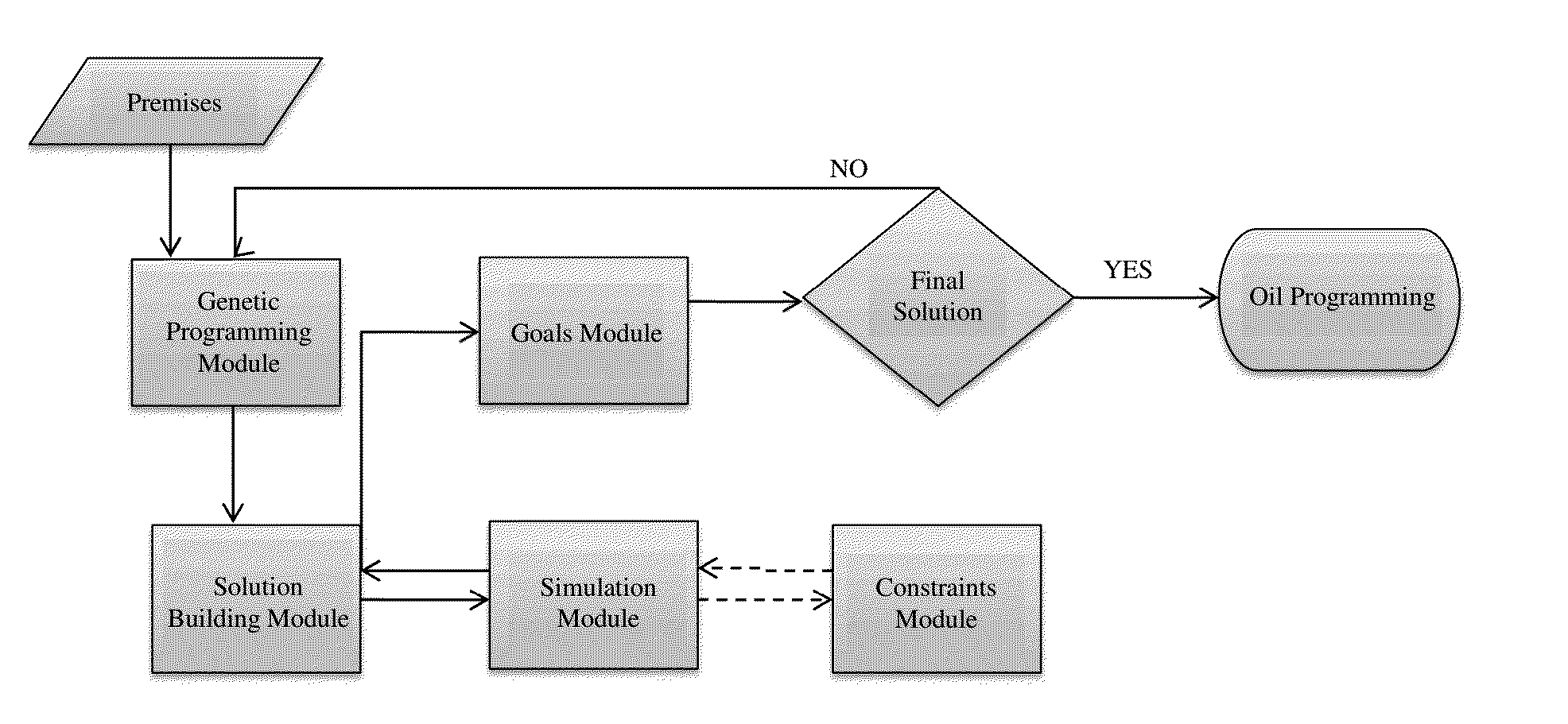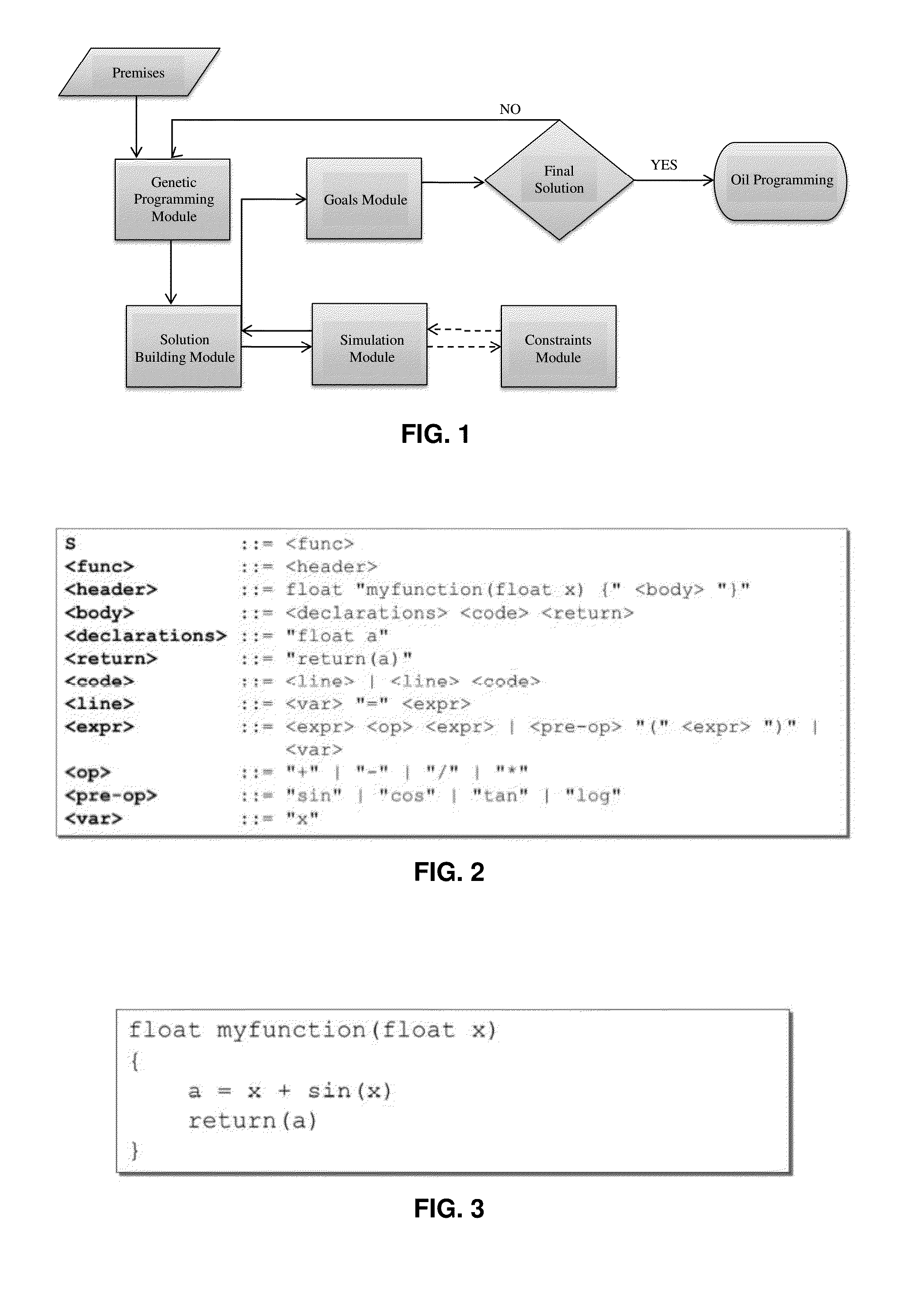System and optimization method for oil programming in a refinery through linear genetic programming and grammar-oriented programming, and readable storage medium
a technology of genetic programming and optimization method, applied in the direction of programming language/paradigm, source code generation, software simulation/interpretation/emulation, etc., can solve the problems of large probability of not happening of large part of the activities expected in a medium term, long time required for manipulating and combining all this information, and little time for optimization analysis and the decision-making process itsel
- Summary
- Abstract
- Description
- Claims
- Application Information
AI Technical Summary
Benefits of technology
Problems solved by technology
Method used
Image
Examples
Embodiment Construction
[0073]Preliminarily, it should be noted that the description below will depart from a preferred embodiment of the invention, applied to oil programming of a refinery. As will be clear to any skilled in the art, however, the invention is not limited to this particular embodiment, since the novelty method presented here can be applied to the solution of other complex problems related to optimization of processes involving decision making in refineries.
[0074]FIG. 1 illustrates a flowchart of the method and optimization system for oil programming in refineries according to one preferred embodiment of the present invention. Such method and system use Linear Genetic Programming oriented to Grammar and with Quantic Inspiration (PGLOGIQ), being that this type of genetic programming (PG) is described with more details and exemplified throughout this description.
[0075]Basically, the method and the system according to the embodiment of this present invention can be described by the interaction...
PUM
 Login to View More
Login to View More Abstract
Description
Claims
Application Information
 Login to View More
Login to View More - R&D
- Intellectual Property
- Life Sciences
- Materials
- Tech Scout
- Unparalleled Data Quality
- Higher Quality Content
- 60% Fewer Hallucinations
Browse by: Latest US Patents, China's latest patents, Technical Efficacy Thesaurus, Application Domain, Technology Topic, Popular Technical Reports.
© 2025 PatSnap. All rights reserved.Legal|Privacy policy|Modern Slavery Act Transparency Statement|Sitemap|About US| Contact US: help@patsnap.com



